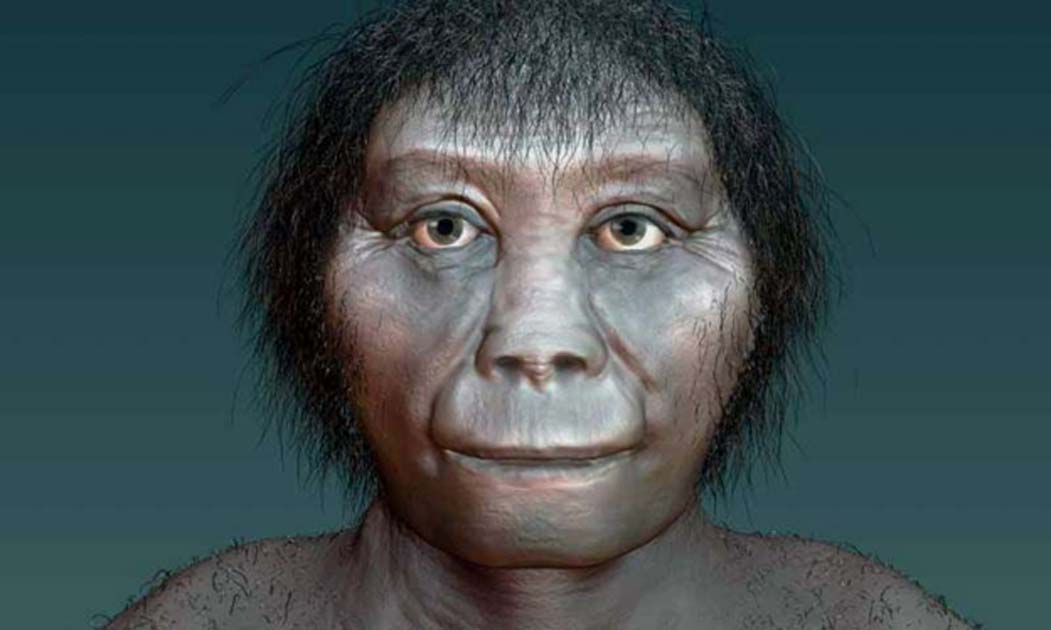Origins of Indonesian Hobbits Finally Revealed
The most comprehensive study on the bones of Homo floresiensis, a species of tiny human discovered on the Indonesian island of Flores in 2003, has found that they most likely evolved from an ancestor in Africa and not from Homo erectus as has been widely believed.
The study by The Australian National University (ANU) found Homo floresiensis, dubbed "the hobbits" due to their small stature, were most likely a sister species of Homo habilis -- one of the earliest known species of human found in Africa 1.75 million years ago.
Data from the study concluded there was no evidence for the popular theory that Homo floresiensis evolved from the much larger Homo erectus, the only other early hominid known to have lived in the region with fossils discovered on the Indonesian mainland of Java.
- Humans Wiped Out the Hobbit: New Study Suggests Homo Sapiens Caused Extinction of Tiny Homo Floresiensis Species
- Second Group of Tinier than Hobbit Hominins Found on Flores Island

Cave where the remains of Homo floresiensis were discovered in 2004, Lian Bua, Flores, Indonesia. (CC BY-SA 2.0)
Study leader Dr Debbie Argue of the ANU School of Archaeology & Anthropology, said the results should help put to rest a debate that has been hotly contested ever since Homo floresiensis was discovered.
"The analyses show that on the family tree, Homo floresiensis was likely a sister species of Homo habilis. It means these two shared a common ancestor," Dr Argue said.
"It's possible that Homo floresiensis evolved in Africa and migrated, or the common ancestor moved from Africa then evolved into Homo floresiensis somewhere."
Homo floresiensis is known to have lived on Flores until as recently as 54,000 years ago.

A model of a female Homo floresiensis. (John Gurche, National Museum of Natural History, CC BY-SA)
The study was the result of an Australian Research Council grant in 2010 that enabled the researchers to explore where the newly-found species fits in the human evolutionary tree.
Where previous research had focused mostly on the skull and lower jaw, this study used 133 data points ranging across the skull, jaws, teeth, arms, legs and shoulders.
Dr Argue said none of the data supported the theory that Homo floresiensis evolved from Homo erectus.
"We looked at whether Homo floresiensis could be descended from Homo erectus," she said.

A reconstruction of a Homo erectus, exhibit at the Westfälisches Landesmuseum, Herne, Germany. (CC BY SA 2.5)
"We found that if you try and link them on the family tree, you get a very unsupported result. All the tests say it doesn't fit -- it's just not a viable theory."
Dr Argue said this was supported by the fact that in many features, such as the structure of the jaw, Homo floresiensis was more primitive than Homo erectus.
"Logically, it would be hard to understand how you could have that regression -- why would the jaw of Homo erectus evolve back to the primitive condition we see in Homo floresiensis?"
- Sulawesi Discoveries: Earliest Human Occupation Pushed Back 60,000 Years and Some of the Oldest Cave Paintings in the World
- The Faces of Ancient Hominids Brought to Life in Remarkable Detail

A reconstructed skull of Homo floresiensis. Credit: Stuart Hay, ANU
Dr Argue said the analyses could also support the theory that Homo floresiensis could have branched off earlier in the timeline, more than 1.75 million years ago.
"If this was the case Homo floresiensis would have evolved before the earliest Homo habilis, which would make it very archaic indeed," she said.
Professor Mike Lee of Flinders University and the South Australian Museum, used statistical modeling to analyse the data.
"When we did the analysis there was really clear support for the relationship with Homo habilis. Homo floresiensis occupied a very primitive position on the human evolutionary tree," Professor Lee said.
"We can be 99 per cent sure it's not related to Homo erectus and nearly 100 per cent chance it isn't a malformed Homo sapiens," Professor Lee said.
Top Image: Artist's impression of Homo floresiensis. Credit: Katrina Kenny, SA Museum
The article ‘Origins of Indonesian Hobbits Finally Revealed’ by was originally published on Science Daily.
Source: Australian National University. "Origins of Indonesian Hobbits finally revealed." ScienceDaily. ScienceDaily, 21 April 2017.


















Comments
A position I have had since the “Hobbit" discovery is No matter how well couched in evidentiary science anthropologists (the most contentious of all scientists) attempt to be in the study of the origins of Homo sapiens sapiens, there are two problematic areas, 1. Sapienscentric bias; 2. Assumptions. No new discovery since the Taung child has produced as much speculation, from the serious to the absurd, as the "Hobbit."
Anthropologically and taxonomically, IMO, any member of the genus Homo should be classified as human. Our bias is that only WE, species sapiens, are humans. Why do we assume, given the number of species of Australopithecus, that only one species of Apith developed the ability to abstract (ultimately the barometer of human-nish adaptation). Why do we assume that Homo floresiensis emerged from OUR chronospecies (H. erectus?) and not from a "cousin" Apith? If "Hobbit" emerged from a species outside our direct line, it would not be a Homo, but a Parahomo, or something similar. Our assumption is that WE were the only smart ape to evolve.
Jack Kilmon
DNA test will help. The specimens found are within the time range of already studied archaic species.